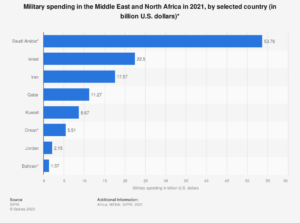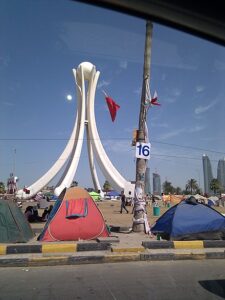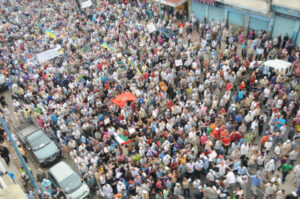When studying a topic as broad and complex as authoritarianism and change in MENA, the way a professor approaches it is important to their students’ comprehension and retention of knowledge, as well as their ability to synthesize it at the end of the class. Throughout this course, I have gained a better understanding of the factors that are more important to focus on to understand authoritarianism in the region.
It is important to focus on historic factors in the region, leading into regime type and the nature of the regime. This helps the student get a better sense of state behavior and how certain regimes stay in power. Virtually all modern nation states in MENA were carved out of or influenced by the Ottoman Empire. Ottoman state building and governing institutions lended its way to the governance of early Islamic states. When European colonialism reached the region, Islamic states collapsed and were run by imperialists, exacerbating ethno-religious tension in the region, creating authoritarian ruling regimes, and leaving detrimental effects on the economy. Decolonization of MENA happened fairly recently, throughout the mid-1900s, so the states in the Middle East are fairly young. This legacy of colonialism, as well as historic influences of the Ottoman Empire, has left marks on states, which is important to recognize when studying the nature of regimes.
Regime type, whether it is a monarchy, republic, or democracy influences the way authoritarianism takes shape in a certain state. Take Morocco for example, exercising the linchpin monarchy model of rule. In Morocco, the ruling family solely participates in political institutions, and not in the bureaucracy. It also exercises political liberalization to stay in power, as seen in Morocco’s tolerance of social pluralism and implementation of temporary democratic bargains, such as the creation of commissions. Commissions allow the monarchy to compromise with subjects while acting as a play for time until everyone cooled off. In reality, the commission reinforces the power of the monarchy. Syria, on the other hand, advertises itself as a pluralistic republic, but effectively governs as a single-party system with most of the power in the hands of the president. Understanding the structures of different regime types, as well as the way they present themselves contrasted with the way they actually govern, allows for better comprehension of the sustained authoritarianism in the region.
It is also essential to understand resource endowments of states in the context of a regime type. The Middle East holds two thirds of the world’s oil, allowing governments to take advantage of oil rents. The presence or absence of oil rents helps explain how regimes maintain authoritarian control of a nation, as governments use them to relieve social pressures that might otherwise lead to demands for greater accountability. They also allow governments not to tax their citizens, so citizens have fewer ways to hold them accountable.
Additionally, the ratio of coercion to legitimacy that a regime implements in society helps to understand how a population remains repressed or gains the resources to rebel. Here, military power is exceedingly important. The Middle East spends the most money on coercive apparatuses compared with any other region in the world, largely funded by oil revenues. The structure of the military, whether it is professional or corrupted, is one of the ways to determine whether or not it will defend the regime if an uprising occurs.

Statista research department, Military spending in the Middle East and North Africa in 2021
Geopolitics is also an important factor to understand the persistence of authoritarianism in the region, as there is not a lot of outside pressure on governments to transition. Many North American and European states are comfortable doing business with authoritarians and won’t speak out against them. An example of this is the United States refusing to condemn Egypt after the Rabaa massacre.
Studying the historical factors, regime types, resource endowments, coercive apparatuses, and geopolitics in MENA allows the student to get a comprehensive understanding of authoritarianism in the region from multiple perspectives. To achieve this kind of approach, it is beneficial to supplement more encompassing region-spanning studies, such as that of Cammett, Diwan, Richards, and Waterbury, with a single case study, like that of Wedeen. This allows the student to understand the broader forces at work in the region, while also getting insight into the intricacies of a regime. It would be impossible to cover all of the details of every authoritarian regime in MENA in one semester, so just looking at a few case studies is beneficial in this sense.
Works cited:
Cammett, Diwan, Richards, & Waterbury. 2018. A Political Economy of the Middle East Fourth edition. Boulder, CO: Westview.
Ross, Michael L. “Does Oil Hinder Democracy?” World Politics, vol. 53, no. 3, 2001, pp. 325–61. JSTOR, http://www.jstor.org/stable/25054153.
Webb, Ed. 2023. Class lectures, Authoritarianism and Change in the Middle East and North Africa, Dickinson College, Carlisle, Pennsylvania, August-December 2023.





